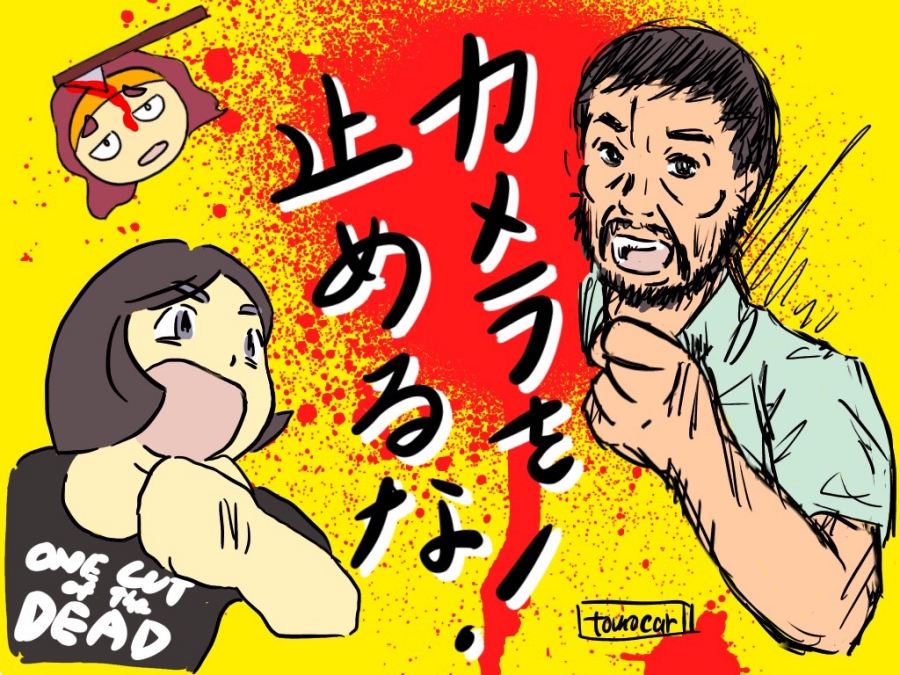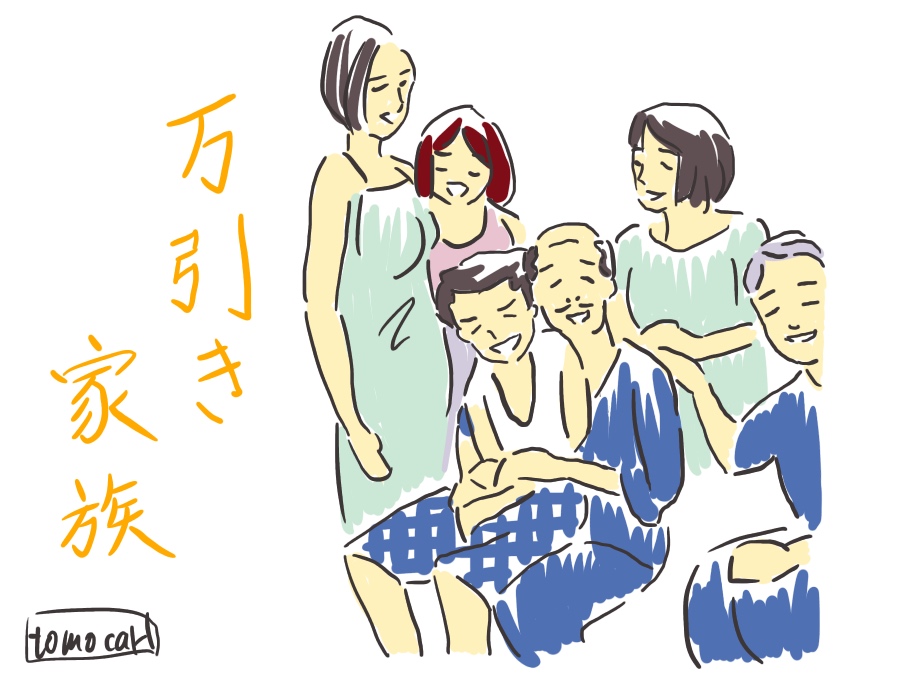中の人の邦画放談⑤ 「ちはやふる-結び-」聖地巡礼編
*English translation below
音響課のtomocarlです。今回は趣向を変えて「ちはやふる聖地巡礼編」をお届けします!
(実は「ちはやふる-結び-」ばかり12回(執筆時)も観たことで別の映画をチェックできてないという。。-_-;)
おっと、聖地巡礼について記す前に、ちょっとだけ音響課らしいことを話させてください。
実は「ちはやふる-結び-」、効果音/音響効果の使い方がとても上手いです!!
・瑞沢かるた部に新入部員が加わって7人になったとき、
背景に吹奏楽部の練習音を敷くことでファンファーレの効果を生んでいる。
・伊織が新に「秒殺」されるシーンでカラスが鳴いている。
コントみたいな演出だが、絶妙な音量やカットのつなぎで、さほどおちゃらけていない。
・菫ちゃんが恋の逆転チャンスを得て「キタコレ!」と言うときに、
遠くで聞こえる野球部のバッティングの音。菫ちゃんの心のヒットが観客に伝わる。
・中華屋の軒で周防さんが講師を引き受ける電話をするときに、救急車の音。
食事の支払いができなかった周防さんの財政ピンチぶりを表すとともに、
静寂すぎない夜を音で調整している。
・「クイーンのかるた(前作で「音のないかるた」と称された)」をする千早の取りは、
畳をする効果音のみ。
そのほか、シャープペンシルの先が折れる音やひぐらしの声、衣擦れなど随所に素晴らしい音響効果がありましたので、ぜひ着目(着耳?)してください。
(涙の音は、生録なのか後から足したのか…判別できなかったのでDVDで確かめてみます!)
では本題の聖地巡礼にまいりま~す。∠(^ー^)
☆東京都府中市
主人公の綾瀬千早が住む街。瑞沢高校もこの辺りの設定ですね。

左が原作漫画やアニメでおなじみの「片町文化センター」。
ヒロイン綾瀬千早の所属する府中白波会は、ここで競技かるたの練習をしています。
そして右が「ちはやふる-上の句-」で太一が千早を負ぶうシーンのロケ地で、
通称「おんぶ坂」。今作「ちはやふる-結び-」にも、登場しますよ!
なんと!映画と同様、周辺にネコちゃんがいました!(映画公開前の写真なので偶然です。)

☆福井県あわら市
千早にかるたクイーンへの夢を与えた綿谷新くんが住む街。
実は福井県は「競技かるた王国」なのです!

上は「ちはやふる-下の句-」で、千早が小学校以来の新に再会するシーンのロケ地。
ファンの皆様は、「新が!千早が!太一が!」って否応にもテンションの上がる場所だと思います。(なお、アニメと原作に出てくる桜並木は、JR芦原温泉駅の周辺にありますので、見比べても楽しいですよ!)
すみませんが写真は去年の桜の時期のものです。
今年も、ちはやふるweek in あわらというイベントで近くまでは行ったんですが、
ご存知の通り今年の福井県はかなりの雪害で。
(リアルな雪害状況を伺い、災害援助や対策について考えさせられました。)
ということで、氷河期のような今年2月の福井駅の様子も。福井は恐竜でも有名ですね。

☆滋賀県大津市
カルタの甲子園「近江神宮」!
「ちはやふる-下の句-」、そして「ちはやふる-結び-」で大活躍ですね。

近江神宮には、百人一首の1首目の歌を詠んだ天智天皇が祀られています。また、天智天皇は日本に時計(水時計)をもたらしたことでも知られています。
ゆえに百人一首と時計についての沢山の展示品を見ることができます。

なお、高校選手権や名人・クイーン戦は併設する「近江勧学館」で行われています。
映画に映るあの部屋もあのロビーもあの階段も、そしてあの畳の間も勧学館ですので、ぜひどうぞ!キャストの皆さんがコメントを寄せてくれた「机くんノート」もありますよ!
各都市、施設とも、時期によってはちはやふる関連イベントや展示がありますので、
ぜひチェックしてみてくださいね!
おまけ。原作者末次由紀先生の原画展にも行きましたよー!^o^v

(tomocarl)
AMATA Staff Talk Japanese Film, No.5 – The Chihayafuru: Musubi Pilgrimage
I am tomocarl from the sound department of AMATA K.K. This time, I’d like to change things up a bit and bring you the Chihayafuru: Musubi Pilgrimage!
(I had actually watched Chihayafuru: Musubi a total of twelve times (at time of writing), so I wasn’t able to check out any other films…-_-;)
Oh, but before I get to the pilgrimage, let me tell you a little something more well-suited for someone from the sound department.
Chihayafuru: Musubi makes very good use of sound effects and acoustics!
・After the point where the Mizusawa Karuta Club gained new members (at a total of seven), they could hear the practice sessions of the Orchestra Club in the background, lending a kind of a fanfare-like effect.
・In the scene where Iori is “demolished” by Arata, a crow is heard cawing. It sounds like a skit, but the audio mixing is superb and it’s cut together very well, so it doesn’t come off as all that silly.
・Just when Sumire seems to have a turnaround chance in her romance and you think “I’ve been waiting for this!” you can hear the sounds of baseball practice in the distance. The sound of a bat hitting a ball really drives home the intensity of Sumire’s feelings.
・As Suō discusses teaching karuta on the phone at the Chinese restaurant, you hear the sound of an ambulance. You get a good sense of the dire financial trouble Suō is in – being unable to pay for his food – and it balances well with the not-too-silent night.
・The only noise Chihaya makes when she takes a card is the sound of touching the tatami mat – a form called “The Queen’s Karuta” (referred to in previous works as “silent karuta“)
Aside from these, there are many well-used sounds in the film, such as the end of a mechanical pencil breaking, the sound of cicadas, and the rustling of clothes. Definitely check (or listen?) it out for yourself!
(I can’t tell if they recorded the sound of the crying tears live, or if it’s added on afterwards…I’ll try listening to it on the DVD!)
And now for our main story: The Pilgrimage. ∠(^ー^)
☆Fuchu, Tokyo
The town where the protagonist, Chihaya Ayase, lives. Mizusawa high school is also located there.

On the left is the Katamachi Culture Center, which fans of the manga and anime adaptation will be familiar with.The Shiroha Club in Fuchu, which our herione Chihaya Ayase is a member of, holds karuta practice sessions there too.
On the right is “Onbu Hill”, which is where Taichi carries Chihaya on his back in Chihayafuru: Kami no Ku. The hill also appears in Chihayafuru: Musubi!
And just like in the film, there was a kitty cat here as well! (This was before the film’s release, so it’s just a coincidence.)

☆Awara, Fukui
This is where Arata Wataya, the boy who gave Chihaya her dream of becoming a karuta Queen, lives.
Fukui is in fact the Land of Karuta!

This is where Chihaya met with Arata for the first time since elementary school, in Chihayafuru: Shimo no Ku.
It’s definitely a place I think fans will get fired up, going “But Arata! And Chihaya! And Taichi!” (Also, the cherry blossom trees which appear in the original works are located near JR Awara Onsen Station. It’s quite fun to compare them to the ones in real life!)
Sorry, I took this photo from last year’s cherry blossom season.
An event called Chihayafuru week, in the city of Awara, was also held this year right up until the season, but as I’m sure you know, Fukui was hit by fierce snowstorms.
(After hearing about the damage from the snowstorms, I did some thinking about counter-measures, and how to provide disaster relief.)
Which means that in February, Fukui pretty much looked like it was stuck in the ice ages. Fukui is also well-known for its dinosaurs, you know.

☆Otsu, Shiga
Omi-jingu, the *¹Koshien of karuta!
This location saw a lot of action in both Chihayafuru: Shimo no Ku and Chihayafuru: Musubi.

Omi-jingu enshrines Emperor Tenji, who is said to have composed the first poem of Hyakunin Isshu. He is also known for bringing the technology of timekeeping (the water clock) to Japan.
As such, there are many exhibits here that relate to the Hyakunin Isshu poems and clocks.

High school tournaments and Meijin/Queen matches are held at the adjacent Oumi Kangaku Centre.
The staircase, the lobby, the rooms, as well as the tatami room in the film are all from the Kangaku Centre so check it out! Little comments from the cast are written in the “Tsukue-kun Notebook” too!
Different cities and institutions hold Chihayafuru-related events and exhibits at various points throughout the year, so be on the lookout!
And just as an aside: I went to Yuki Suetsugu-sensei’s (the original author) art exhibit too! ^o^v

(tomocarl)
*¹Hanshin Koshien Stadium is a baseball park located in Kobe, built to hold the national high school baseball tournaments. It has a capacity of 55,000 people; the largest stadium in Asia at the time of its completion (1924)



